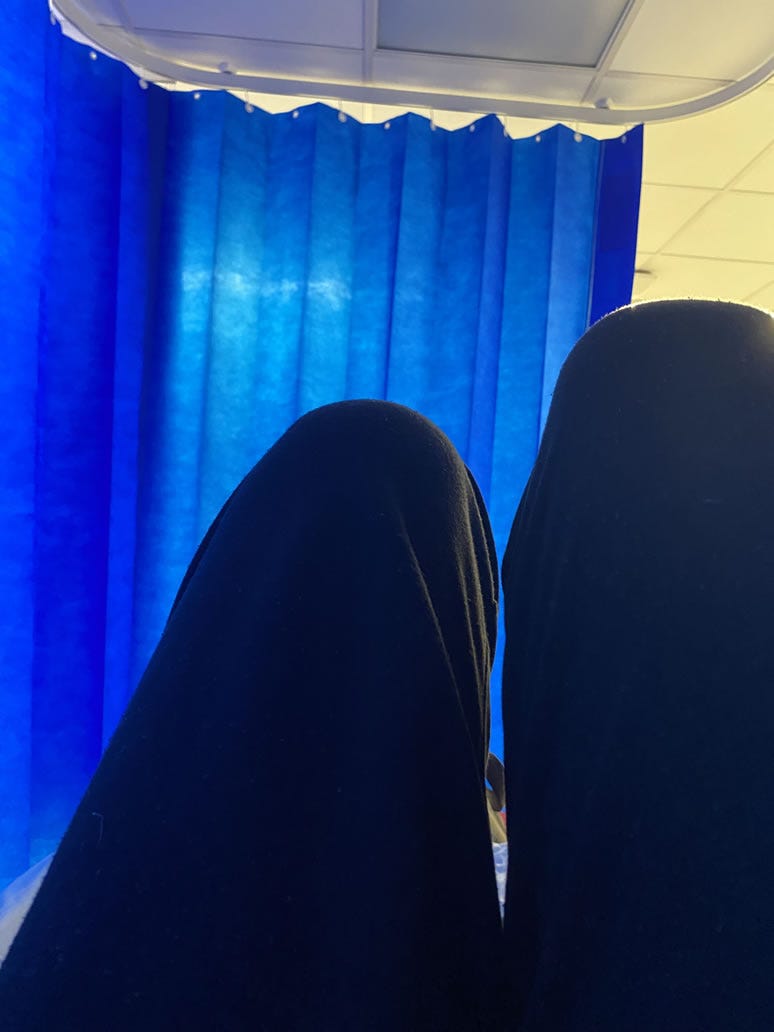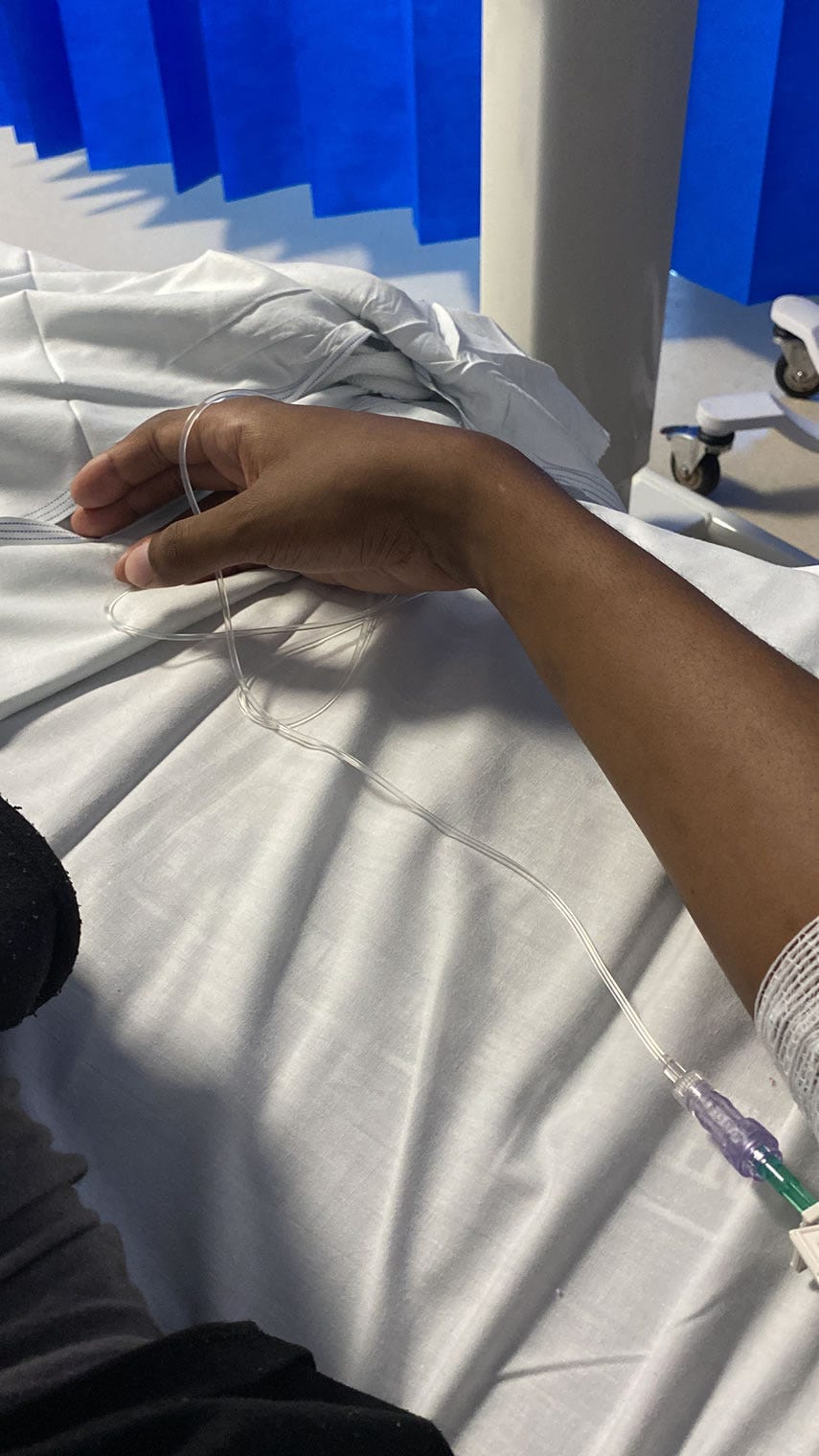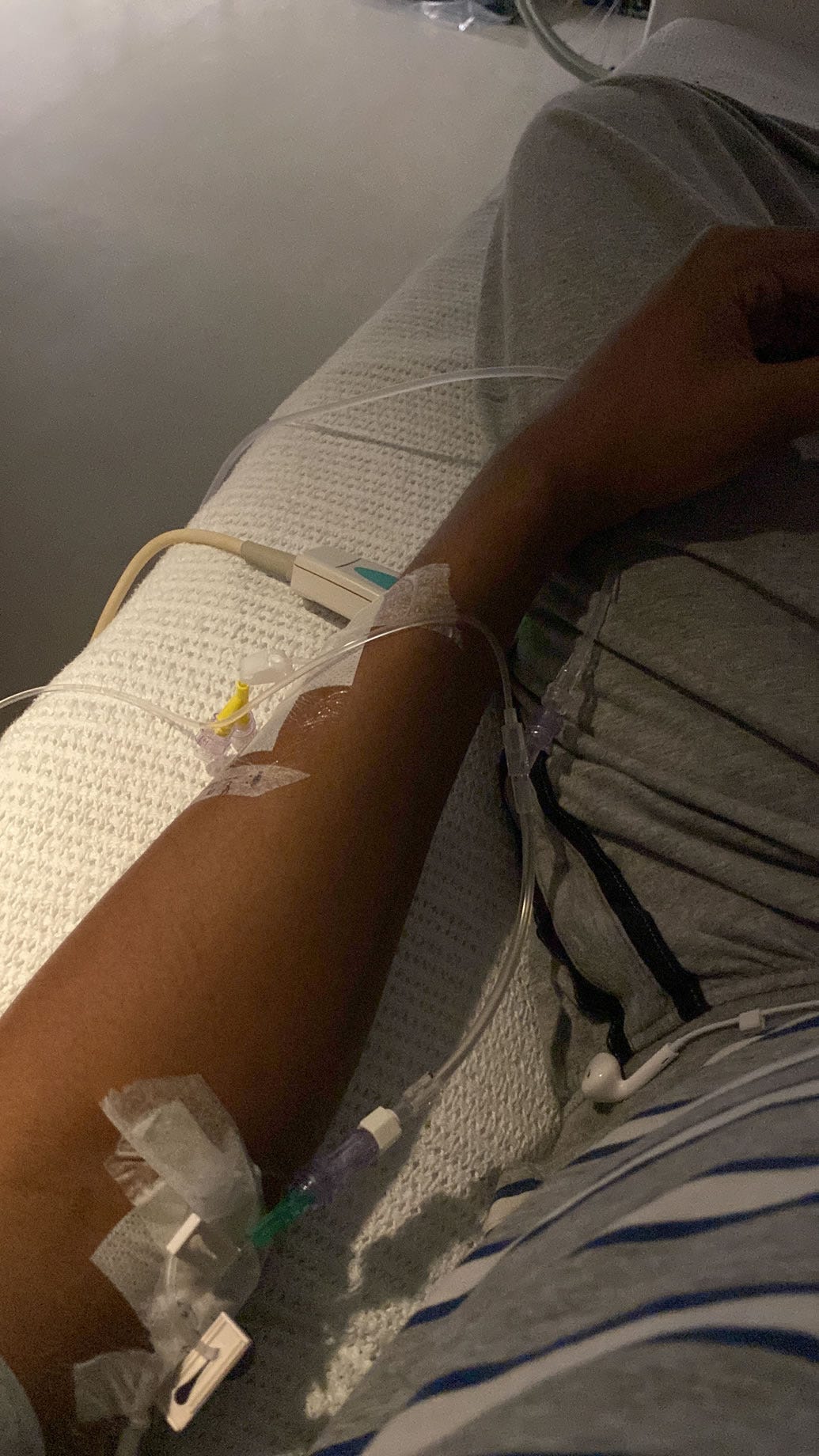My Sickle Cell Crisis, 2023
A rundown of my latest sickle cell crisis / health scare
I am currently recovering from one of the scariest sickle cell crises of my life. Before I took myself to hospital, I really thought that I might die, as I was finding it very difficult to breathe. This post will break down my experience with this latest sickle cell crisis.
After attending an event with friends some weeks ago, I started to notice some kind of cold or infection symptoms days later. I thought it would just be a common cold that passed. I was wrong.
Around September 5th, I started noticing an unfamiliar pain in my side. My upper-left quadrant to be exact. Fast forward to September 7th, two days later. At this time, the side pain was so bad that I could barely bend my body. And I started to have difficulty breathing. I noticed myself breathing heavily after the simplest of actions.
At around 11 pm that night—right after binging the final season of Top Boy—it got significantly worse. I tried to park myself on the toilet and open my bowels in case it was extreme constipation, but I had no luck with this.
Then, I decided that I should try and sleep the pain off. To my horror, the pain was so severe that I couldn’t even lie down. I was struggling more and more to breathe. At that moment, I thought I might die at any moment. That’s when I KNEW I had to get myself to the hospital.
It was now midnight, and I was scrambling to get as many of my essentials as I could, throwing them into my messenger bag. It was past midnight, and I didn’t want to bother anyone to get me to the hospital, especially as my family had been through much stress recently. Because it was super urgent, I decided that I would call a taxi. Ambulances have been known to take hours to arrive. The taxi showed up within 10 minutes. I was officially on my way to the Accident & Emergency (ER if you’re in the US) division at Luton & Dunstable Hospital.
My Experience at the A&E / ER as a Sickle Cell Patient
My A&E experience was long and uncomfortable. It involved hours of waiting on hard, agonizing seats. Typically, in the past, sickle cell patients were fast-tracked and given a bed as soon as possible, even if it was a temporary bed on the A&E ward. But they didn’t provide me that courtesy this time around.
When I was finally called onto the A&E ward, I had to wait a little longer to get my blood test and cannula. I was extremely anxious at this point, as nurses have struggled to get into my veins for the past few years. I always end up getting pricked 3-4 times before they can find a vein. This is for two reasons: firstly because my veins are tiny and weak, and secondly, because during a sickle cell crisis, blood isn’t flowing through the veins as effectively.
After two nurses struggled to get a needle in, the second nurse finally managed to get in a blue needle—remember this for later.
After that, I was sent back to the waiting room outside of the emergency ward. Back to the hard, agonizing seats that only made my pain worse. After some time, an A&E doctor called me back in to examine me. They saw how much torture I was going through. They got me some oral morphine pain relief and then planned some tests for me. These tests included a urine test and an X-ray.
Once these tests were complete, they kicked me out of the A&E ward once again, forcing me back to those hard, uncomfortable seats. And it was here where I wanted to break down in tears, as they had me waiting here for at least 4-5 hours. It seemed like they had forgotten about me, as no one came to give me an update. I didn’t know if I was staying in or being sent home. All I could do was sit and suffer for hours, watching other unfortunate patients come in after me and be called up before me.
I looked up and saw that it was now daylight, and at this point, I was fed up and just wanted to sleep. I got up and walked back onto the A&E ward and asked the nearest nurse I could find to remove my cannula and let me go home. At this point, the staff had switched over, with new nurses starting their shifts. The morning staff was much more compassionate than the night staff, as they immediately gave me an update, telling me that they were waiting for my bed. She then offered to allow me to sit in the A&E ward where it was far more comfortable.
From here, things moved much more swiftly. They gave me more pain relief. And then a medical nurse came to examine me, allowing me to lay on a temporary bed for a little while.
It was eventually decided that I should be given a PCA morphine pump, which would allow me to press a button to give myself a micro-dose of morphine whenever I was in too much pain. It has a 5-minute lockout to prevent overdosing. I would also be given IV fluids and strong antibiotics.
The Blue Needle Came Back to Haunt Me
And then, my anxiety was spiked! Those who know me, know how much I fear needles. This stems from having such weak veins and having to be pricked up so many times. I’ve also had many mishaps and uncomfortable cannulas that stung my veins internally. But that blue needle that the nurse put in me earlier quickly became a nuisance for me.
When the nurses put the PCA pump through my cannula, everything felt fine. But as soon as they put the IV fluids through, I felt the most torturous sensation ever in my veins.
The needles come in different shapes and sizes, with various-sized openings. The blue needle has a tiny opening, which causes great discomfort when fluids or antibiotics are forced through at a rapid rate. I immediately asked the nurse (Pina) if the fluids could be stopped because it was causing me pain. She adjusted the flow of the IV fluids so that it flowed slower, and this helped significantly. She mentioned to me that it was because it was a blue needle. This is something I will remember for next time!
Finally Getting My Bed on the Ward Where I Would Stay
After roughly 9.5 hours of suffering in A&E, I finally was allocated a ward and a bed, where I would stay for the rest of my admission. Pina got me in a wheelchair, which had a bottom compartment for all my things. And then she wheeled me over to the ward on the other side of the building. The ward was in the St. Mary’s section of the building, which is a completely new building that didn’t exist during my last sickle cell crisis admission. The ward was a specialty hematology ward, named after the late Dr. Joshi, who used to be my main consultant doctor before he passed away.
Because this was a hematology ward, it meant that the nurses on the ward were specifically trained to deal with sickle cell patients (and other conditions that fall under the hematology umbrella). This was a blessing, as my last stay at the hospital made me never want to be admitted again due to being mistreated.
One thing that made me appreciate the A&E nurse, Pina, was that she immediately told the nurses about my discomfort with the cannula so they could arrange to move it to a new vein, with a better needle. She didn’t have to do this at all, as she was just an A&E nurse handing me over to another ward, and by now, I had been so used to being treated as a statistic and not a patient. This felt like a nice, kind gesture, and showed she had been paying attention to how I was feeling. Something that not all nurses do.
My cannula was later switched over (after many more unsuccessful needle pricks). And the new cannula was far more comfortable.
What Actually Caused My Crisis?
So, what triggered my crisis? It turns out that the infection I caught was more serious than I thought. Definitely not a common cold. Apparently, on the scans the infection was huge. And this infection triggered my sickle cell crisis. A crisis so bad that I found it hard to breathe. On top of this, I also had severe constipation.
Thankfully, the wonderful team on the St. Mary’s Joshi ward was able to come up with an effective treatment plan, which involved strong antibiotics, pain relief, and lactulose.
No! Not Another Cannula!
On the day after getting into my ward, I got another anxiety spike when I was told that for my CT scan, I would need a pink or green cannula needle. The new cannula they had put in after arriving on the ward was a yellow needle, which meant that I would need yet another cannula just to receive my CT scan. You can just imagine my horror at being told this.
It was a challenge to find another vein to put the new cannula in, and the doctor even needed a machine to scan my arms to help them cannulate me again. Finally, they managed to get one in on my left arm. And I now had two cannulas in the same arm.
My Summary of My Sickle Cell Crisis
Each time that I’m admitted to the hospital for a sickle cell crisis is a traumatic experience for me. I also get severely depressed at not being able to live a normal life. But I have to be grateful that the NHS was able to take me from feeling on the brink of death to feeling like I’m going to be okay again, in a matter of five days. It’s a crying shame that the NHS is so underfunded right now.
I also have to thank my mother dearly for being there for me and bringing me food and water each day.
Thank you to my many friends who checked up on me every day, even when I was too out of it to reply all of the time.
It was difficult to remember all of the nurses’ names, but I am very grateful to Maria, the Southeast Asian nurse who found my vein on the first try, every time she did my daily blood test. She also spoke to me and cared for me like a real concerned nurse. As did a few of the West African nurses who are very familiar with sickle cell.
In the bed next to mine, there was a teenage sickle cell patient named Samuel, who was suffering his own complications. It was nice having another sickle cell patient to talk to and share experiences with. Good luck at University, Samuel!
What Next?
Thankfully, I am now home and recovering. I am still very weak, and suffering a lot of pain. But at least this is far more tolerable than not being able to breathe or lie down comfortably.
I am a very ambitious person, with many projects on the go at once. But I am now forcing myself to take a break for a week while I recover. If you are someone that I work with, I apologize for being unable to work currently.
For now, that’s the story of my 2023 sickle cell crisis. If there are any updates, I’ll be sure to document them. Don’t forget to visit and join my /r/SickleCell Reddit community for more information and discussions on sickle cell. This is a perfect place to ask questions and get support about sickle cell.
Catch Up On The Mere Immortal Web Serial - Still Ongoing!





